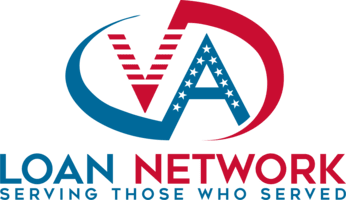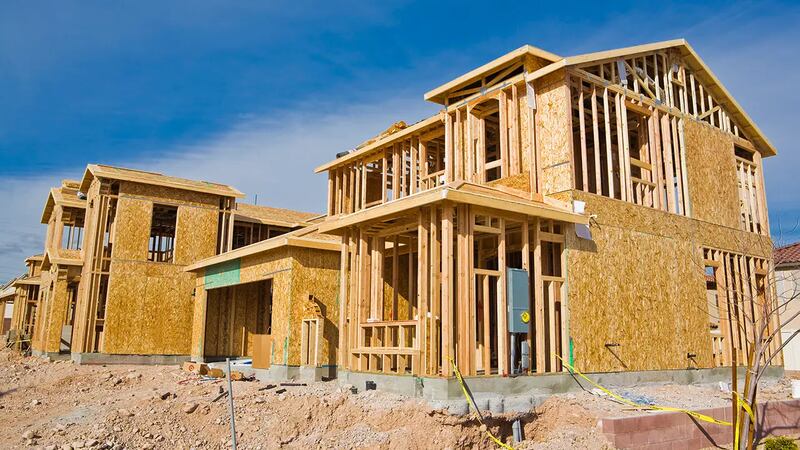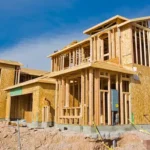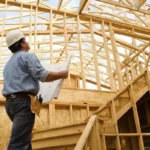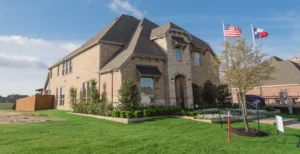Yes, you can use a VA loan to build a home, but there are a few more steps involved than when using a VA loan to buy an existing home.
VA loans for new construction follow specific rules and regulations that veterans and their lenders must adhere to during the process.
Key Benefits of Using a VA Loan to Build a Home:
- No down payment required: Just like VA loans for existing homes, no down payment is necessary if you qualify.
- No private mortgage insurance (PMI): PMI is not required on VA loans, even for home construction loans.
- Competitive interest rates: VA loans often have more favorable interest rates compared to conventional loans.
- Flexible loan terms: VA loans for home construction can be more flexible in their repayment terms compared to conventional construction loans.
Challenges of Using a VA Loan for Construction:
- Finding a VA-approved builder: Not all builders are familiar with VA loan requirements or are VA-approved. You will need to ensure your builder meets the VA’s qualifications.
- More paperwork: VA construction loans require detailed documentation, including plans, contracts, timelines, and budgets.
- Longer approval process: Because of the additional documentation and requirements, the approval process may take longer than traditional home loans.
- Costs: Building costs can vary widely, and unforeseen expenses may arise during the construction process.
Steps to Build a Home with a VA Loan
If you’re considering building a home with a VA loan, it’s essential to follow the right steps to ensure everything goes smoothly:
1. Check Your VA Loan Eligibility
Before anything else, you’ll need to confirm your eligibility for a VA loan. You can request a Certificate of Eligibility (COE) through the VA or through a lender. Your COE verifies your ability to apply for a VA loan based on your service history.
2. Find a VA-Approved Lender and Builder
It’s important to work with a VA-approved lender who understands the construction loan process. You’ll also need to find a builder who is familiar with VA requirements and who is approved by your lender.
3. Submit Construction Plans and Budget
Your lender will require a detailed set of plans, budgets, and timelines for your project. These documents must be thorough and include:
- Blueprints of the house
- Estimated costs for labor and materials
- A construction schedule
- Contracts with your builder
- Any permits required for construction
4. Apply for a VA Construction Loan
Once all the documents are in place, your lender will help you apply for the construction loan. There are two types of loans available:
- One-time close loan: This combines both the construction loan and the permanent mortgage into a single loan, meaning you only need to close once.
- Two-time close loan: With this option, you close twice—once on the construction loan and again when it converts into a permanent VA mortgage once the home is built.
5. Construction Begins
Once the loan is approved, construction can begin. During this phase, the lender will disburse funds to the builder in stages, known as “draws,” as different parts of the construction are completed.
6. Inspections and Approvals
Throughout the construction process, inspections will be required to ensure the home meets VA standards and local building codes. This protects both the buyer and the lender.
7. Loan Conversion
Once the home is complete and final inspections are done, the construction loan is converted into a permanent VA mortgage. You’ll then begin making regular monthly mortgage payments.
VA Construction Loan Requirements
To qualify for a VA construction loan, both the borrower and the builder must meet certain requirements. Here’s a breakdown:
For Veterans:
- Must obtain a Certificate of Eligibility (COE) from the VA.
- Generally, a credit score of at least 620 is required, though some lenders may have more flexible terms.
- Must provide proof of income and employment stability.
- A contract with a VA-approved builder and detailed construction plans are required.
For Builders:
- Builders must be VA-approved, which means they must register with the VA and meet specific construction and financial criteria.
- Builders must provide a warranty on the home after construction is complete.
- All homes must be built to meet VA minimum property requirements (MPRs), ensuring they are safe, sanitary, and structurally sound.
Current Housing Market and Home Building Costs
In 2024, the housing market continues to be competitive, with home prices remaining elevated in many regions due to limited inventory and rising interest rates. For many veterans, building a home has become an attractive alternative to purchasing an existing one, particularly in areas where housing supply is tight.
According to the National Association of Home Builders (NAHB), the average cost to build a new single-family home in 2024 is approximately $394,000, including the cost of land. However, this figure can vary widely depending on factors such as location, size, and materials used.
Factors That Affect Home Construction Costs:
- Land prices: Land can be expensive, particularly in desirable areas, and should be factored into the overall cost.
- Materials and labor: Rising material costs, such as lumber, and high demand for skilled labor can increase building expenses.
- Location: The cost of building a home varies significantly by region, with higher costs in urban or suburban areas compared to rural locations.
- Design and finishes: Customizations and high-end finishes can drive up the cost of a new home.
Table: VA Loan Construction vs. Conventional Construction Loan
| Feature | VA Construction Loan | Conventional Construction Loan |
|---|---|---|
| Down Payment | No down payment required | Typically 20% down payment |
| Private Mortgage Insurance (PMI) | No PMI required | PMI required if less than 20% down |
| Interest Rates | Competitive VA loan rates | Higher rates due to construction risk |
| Credit Score Requirements | Minimum credit score of 620 | Higher credit score often required |
| Builder Requirements | VA-approved builder | Any licensed builder |
| Loan Terms | 15-30 years, fixed rates | Varies, often 1-3 year terms for construction |
| Inspection and Approval | VA inspections required | Inspections required by lender |
Pros and Cons of Using a VA Loan for Building a Home
Pros:
- No down payment: This is a major advantage for veterans who may not have saved up for a down payment.
- No PMI: Saves veterans thousands of dollars over the life of the loan.
- Competitive interest rates: VA loans often come with lower interest rates than conventional loans.
- Customization: Veterans can design and build a home to their specifications, making it their dream home.
Cons:
- More paperwork: There is significantly more documentation required compared to buying a home.
- Limited builder options: Not all builders are VA-approved, which can limit choices.
- Longer approval process: The process can take longer due to the additional requirements and inspections.
- Potential for cost overruns: Construction projects can run over budget, which could require additional funds from the borrower.
FAQ: Using a VA Loan to Build a Home
1. Can I use a VA loan to buy land and build a home?
Yes, VA loans can be used to both purchase land and finance the construction of a home, but this must be done as part of a single loan process. The VA does not allow land-only loans.
2. How long does the VA loan process take for new construction?
The process can take 30-60 days for loan approval, and the construction phase can last several months depending on the size and complexity of the home.
3. Do I need to make a down payment for a VA construction loan?
No, as with other VA loans, no down payment is required for a construction loan if the appraised value of the home supports the loan amount.
4. Can I build a custom home with a VA loan?
Yes, VA loans can be used to build custom homes, provided the construction plans and builder meet VA guidelines.
5. What happens if construction costs exceed the loan amount?
If construction costs go over budget, you may be required to cover the additional costs out of pocket, as VA loans only cover the agreed-upon amount.
6. Are VA construction loan interest rates higher than standard VA loan rates?
Typically, construction loans have higher interest rates due to the added risk of new construction, but VA loan rates are still generally lower than conventional construction loans.
7. What inspections are required during construction?
The VA requires inspections at various stages of the construction process to ensure that the home meets both VA and local building standards.
